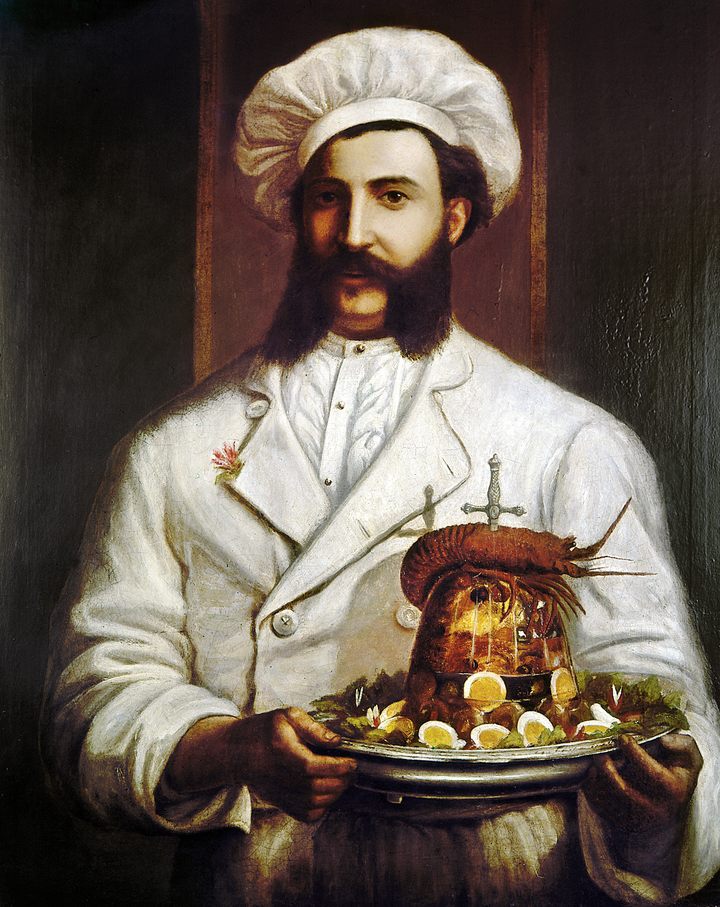

How America Embraced Aspics With Threatening Auras
From futuristic test kitchens to Under-the-Sea Salad, midcentury Jell-O took a turn for the weird.
The lamb ribs lie in a precisely arranged herringbone pattern, surrounded by nubs of green beans, hard-boiled eggs, and capers, all entombed in a flavorless, wobbling mass. A two-tiered tower harbors swirling clouds of mayonnaise anchored by erect stalks of asparagus. An acid-green, lime-flavored mound holds a can’s worth of tuna speckled with pimento olives. Few foods today feel as anachronistic as the gelatin “salads” (a catch-all term for dishes sweet, savory, and everything in between) of midcentury America.
As with so many things considered cutting-edge from the early to mid-1900s, this former food of the future is now a subject of derision and morbid fascination. Facebook groups like “Crimes against jello and vegetables and other mid-century transgressions” and “Aspics with threatening auras” collectively have tens of thousands of members, all of whom revel in the weirdest examples of the genre.
Whether it’s a whole turkey in aspic from the 1920s or a gelatin loaf portrait of Queen Elizabeth, the appeal lies in juxtapositions that feel, well, wrong. It’s what Freud would have called unheimlich, but in today’s internet parlance is known as “cursed.” Like an eyeball with a set of human teeth protruding under the lashes, the cursed aesthetic hinges on an image’s ability to make the viewer squirm.
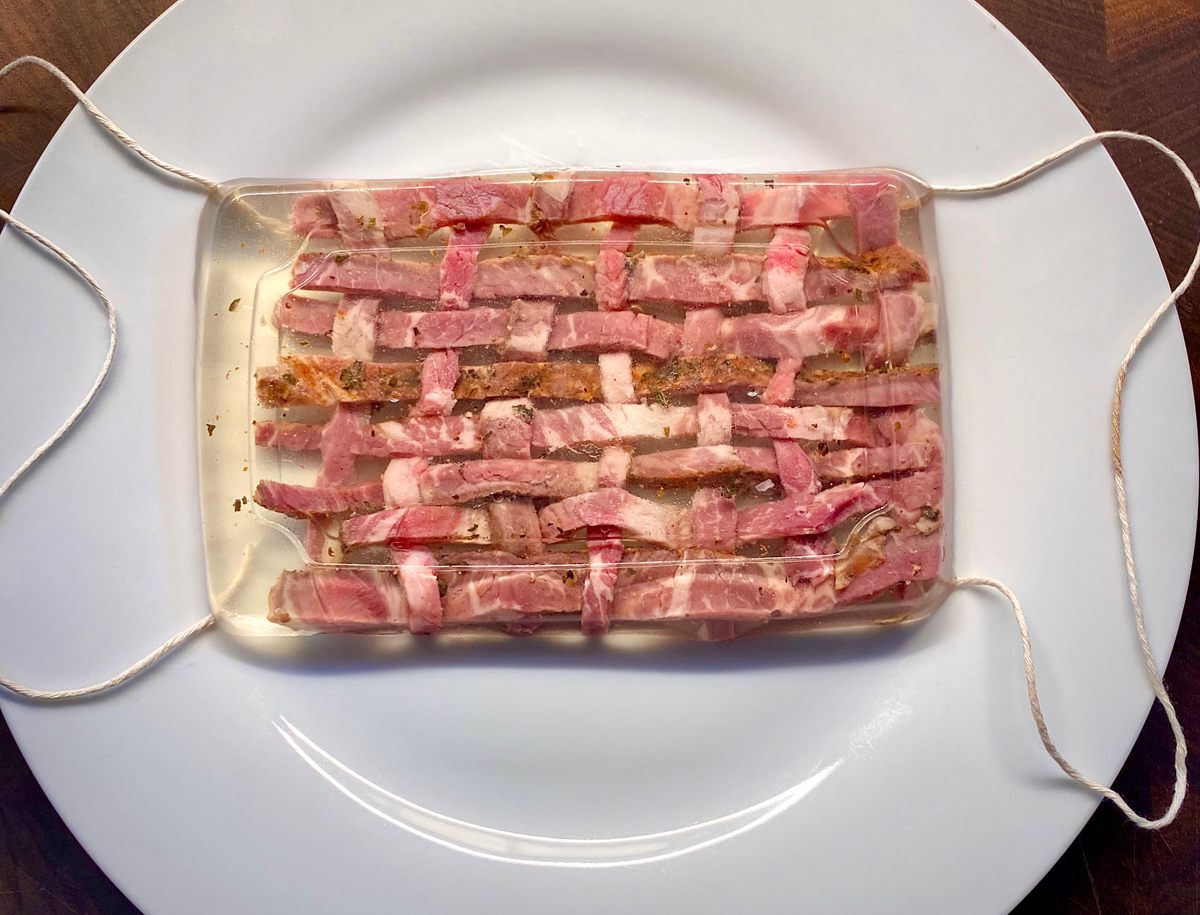
Aspics weren’t always cursed. Despite their present-day associations with 20th-century American food gone awry, savory gelatin dishes are neither originally American nor particularly processed. For nearly a thousand years, aspics held a place of honor on festive tables and courtly banquets around the world. The 10th-century Arabic cookbook Kitab al-Tabikh, for example, contains a recipe for a saffron-stained fish aspic that caught the light like a cut garnet.
“[Gelatin] is one of the very few foods that goes so radically in and out of fashion from epoch to epoch,” says Ken Albala, a history professor at the University of the Pacific. The author of more than two dozen books on food history and culture, Albala chronicles the story of his current obsession in his forthcoming book, The Great Gelatin Revival: Savory Aspics, Jiggly Shots, and Outrageous Desserts.

“We’re in one of those periods where it’s totally out of fashion,” Albala says. “That’s because it was democratized with the brand, but also because everything Jell-O stood for—progress, modernity, bright colors—stands in contrast to the idea of the natural, the sustainable, the artisanal.”
Over the last three years, Albala has earned the nickname “Jiggle Daddy” for his willingness to attempt all sorts of gelatinous feats. Some of his more surreal creations include a gelatin COVID mask with interwoven strips of raw meat and two inverted octopuses in sake-infused jelly, their tentacles curled and open maws exposed.
Albala discovered his Jiggle family, so to speak, in groups such as Facebook’s “Show Me Your Aspics,” which has more than 45,000 members to date. When he found the page, he remembers being mildly horrified—and immediately hooked. “It was fascinatingly weird stuff, not all retro ’50s aspics,” he says. “I thought, Let me try this. And I made one, and then I made another one.”
As with most people in this particular internet subculture, members of “Show Me Your Aspics” revel in unpalatable flavor combinations. Among the more popular memes that have been circulating as of late is an aspic set in a Bundt pan mold, swimming with diced Spam, canned oysters, olives, frozen peas, carrots, kiwis, and a garnish of spray cheese. Tristan and Taylor Collier, who invented the dish in 2019, dubbed it “How to get out of potlucks for the rest of your life.”

“It’s a very specific demographic that is not looking into this for kitsch value; they embrace the deranged,” Albala says. “They want something slightly threatening. If there’s some really sick combination, they love that.”
Gelatin’s descent into the wriggling, meat-studded molds that now evoke such disgust and delight is a fundamentally American one. And as absurd as they may appear, there was nothing accidental about them. If the deeply weird gelatin art of today reflects Americans’ appetite for unsettling things in unsettling times, midcentury gelatin salads echo the rise of the nation’s industrial food complex and its obsession with class, gender, and the unceasing pursuit of more.
In the era before refrigeration, encasing meat or seafood in an air-tight, collagen-rich dome was an effective method of keeping harmful bacteria at bay. Cooks in 12th-century Europe quickly latched on to the concept. Long before the rise of powdered Jell-O packets, the binding agents came from all sorts of sources: The boiled feet of pigs or calves, or the bones and heads of river fish were popular options, but hardly the only options. Grated hartshorn, from the dried antlers of a stag, or isinglass, from the swim bladder of a sturgeon, made for an almost-instant jelly.
“Cooking bones and joints and things that have a lot of natural gelatin is far more of a linear path than Jell-O, which is basically the bastardized version of that,” says Bonnie Morales, chef and co-owner of Kachka, a Russian restaurant in Portland, Oregon. Morales serves kholodets, a savory meat aspic popular in a number of Eastern European cultures, during the cooler months. “People think that meat aspic is this crazy anomaly and in reality, the idea of taking gelatin, which is an animal product, and refining it and adding sugar and fruit to it, is actually the abomination.”
In Ukraine, kholodets has long held a special place on festive tables around Christmas and New Years. For Olesia Lew, head chef of Veselka, a Ukrainian restaurant in New York, kholodets has always been an expression of love, as well as a visual medium for the cook to show off. “My sister’s mother-in-law would make the parsley look like river reeds and would cut carrots into little fish,” she says. “It’s always thoughtful in its presentation because they wanted it to shine.”
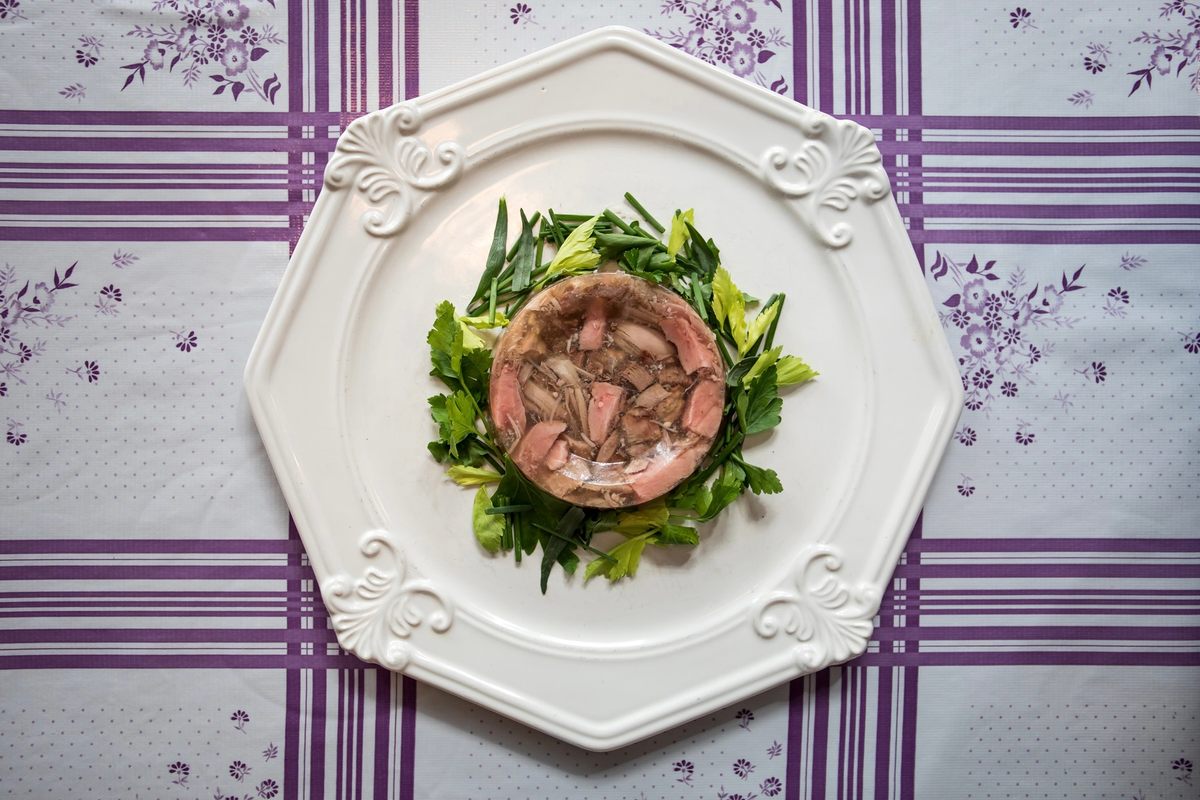
That opportunity for showmanship is a major reason why aspics were once the food of kings and emperors. According to a 1546 manuscript, one of King Henry VIII’s favorite dishes was a ruby-hued jelly of spice-infused wine. Maestro of haute cuisine Marie-Antoine Carême’s elaborate, truffle-studded aspics were the glory of the 18th-century French and Russian courts. In the 1800s, Tafelspitz-Sulz, an aspic with boiled beef, was a favored dish of the Austrian Imperial family served at the grand Hotel Sacher in Vienna. An aspic meant that you either had time on your hands or the capital for domestic servants or professional cooks—not to mention the luxury of some form of refrigeration. Aspics, in other words, were exclusive.
When wealthy Europeans migrated across the Atlantic, many brought their cooks and aspic recipes with them. At the end of the 19th century in the United States, savory aspics still carried a certain air of Continental elitism. In an 1874 portrait, Jules Harder, the chef at the Palace Hotel in San Francisco, holds an aspic crowned with a whole lobster that’s been impaled with a miniature sword. Aspics like Harder’s were, after all, labor-intensive, requiring either soaking whole gelatin sheets or making a stock from scratch.
Then in 1893, Sarah Tyson Rorer, an American food writer and early member of the domestic science movement, wrote a letter to the Knox Company. Women were already compacting their “salads” into aspic form, but soaking gelatin sheets was a pain, Rorer noted. What if the company came up with an easier, powdered option? Within the next year Knox’s “Sparkling Granulated Gelatin,” a powder that dissolved instantly, was on the market. Knox capitalized on its product’s malleability with a public recipe contest in 1905 for creatively molded gelatin dishes. Fannie Farmer herself served as a judge and the resulting recipes inspired American housewives to feature their own jiggling centerpieces at their next dinner party.
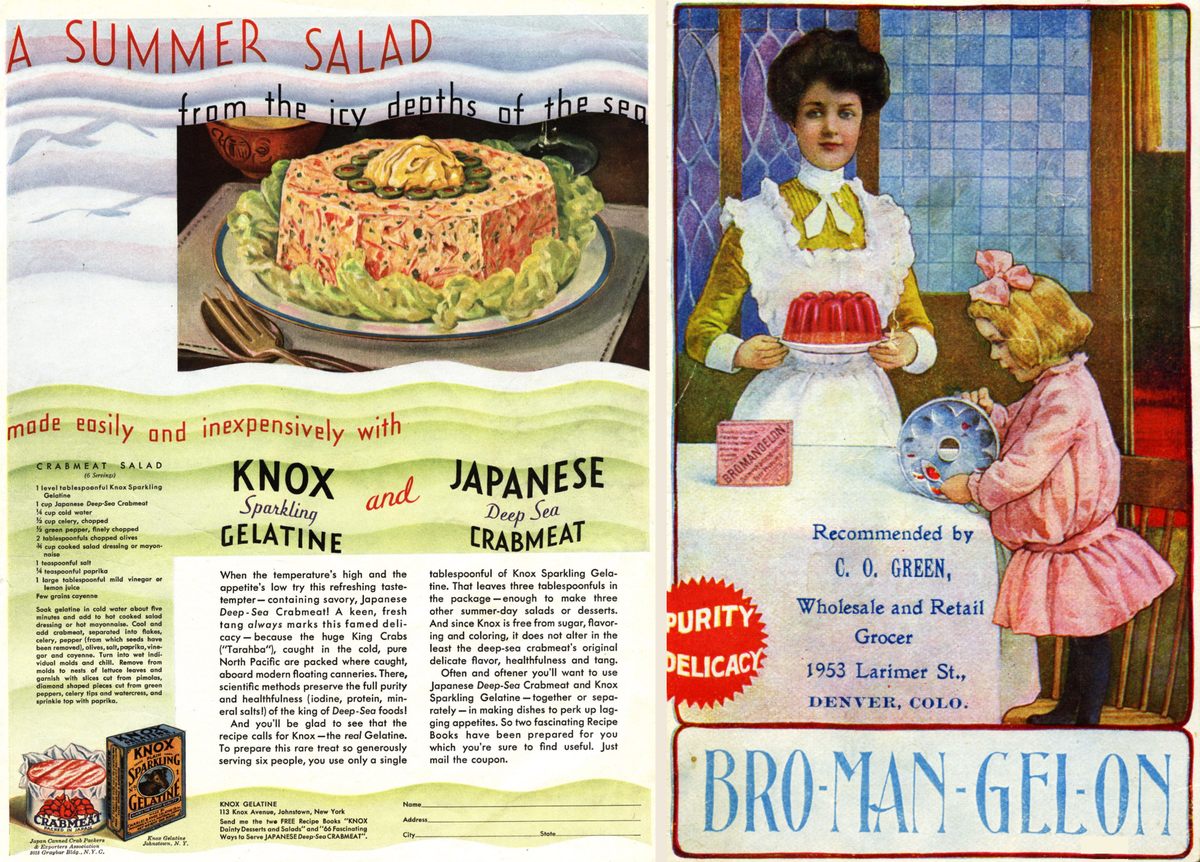
It didn’t take long after the arrival of Sparkling Granulated Gelatin for another innovator to find a better way to brand it. In 1897, a New York carpenter named Pearle Wait patented the name Jell-O. While Knox Gelatin was unflavored, Wait started producing lemon, orange, raspberry, and strawberry options. Two years later, Orator Woodward, an inventor and founder of the Genesee Pure Food Company, bought the patent for Jell-O for a mere $450 (or around $4,000 today).
“When my great-great-great-uncle bought the patent to Jell-O, he initially had trouble selling it,” says Allie Rowbottom, an heiress to the Jell-O fortune and the author of the book Jell-O Girls. “People weren’t sure what to do with it.” Woodward quickly found his niche. Given that home cooking was still a largely feminized domain, it was inevitable that a new food product’s marketing strategy would be gendered. But Jell-O as a brand leaned in more than most: It did not feature men in its advertisements until well into the 1990s.
“American women have been so culturally indoctrinated to be caretakers,” Rowbottom says. Early advertisements for Knox gelatin and Jell-O promised harried housewives convenience, a way to put something that felt high-class on the table with their ever-shrinking time. Jell-O, according to Rowbottom, “was portrayed as a way for them to take care of their duties in the home and still manage the million other things they had to do. Something about that felt very aligned with American values.” Within just two years, Woodward’s annual sales were more than $250,000 (more than $8 million today).
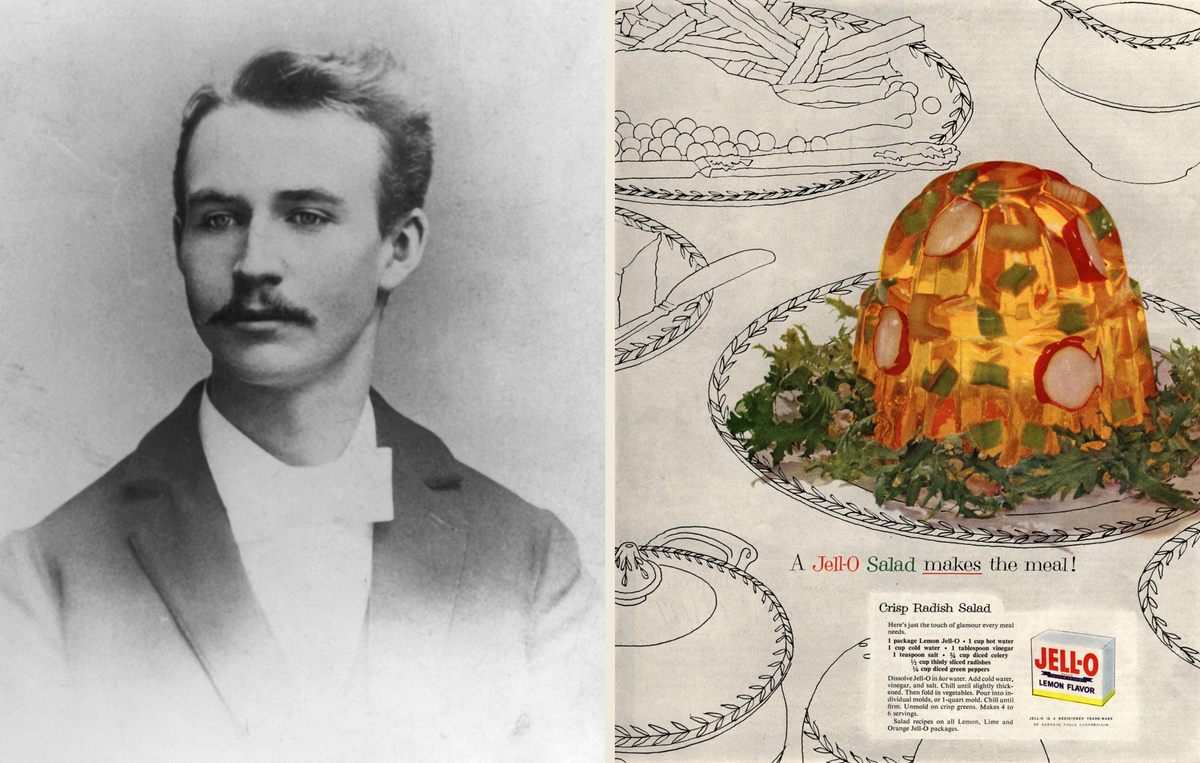
“This whole phenomenon is a poster child for conspicuous consumption. It’s food that looks like something spectacular,” says Laura Shapiro, who spent years researching the rise of gelatin salads for her book, Perfection Salad, in large part because of her total bewilderment as to why any rational human being would want to make or eat them.
“There’s this combination of social mobility and the rising incomes and people moving into the middle class,” Shapiro says. For several decades in the early 20th century, Jell-O salads were a way to display that a woman had both the leisure time to prepare them and a refrigerator in which to store them.
Gelatin also became untethered from any sort of courtly tradition. Instead, the test kitchens at the Knox Company and the Jell-O Company (the latter of which was sold in 1925 to the Postum Cereal Company, Inc., which would later become the General Foods Company, which would subsequently be swallowed by the tobacco conglomerate Philip Morris Companies in 1985 to form Kraft Foods Inc.) churned out bizarre combinations. As Jell-O introduced new artificial flavors, recipes increasingly relied on electric-hued lime, lemon, and other saccharine options in lieu of unflavored gelatin. Like the Betty Crocker Test Kitchen, these laboratories would have an outsized influence on American dietary habits for decades to come.
“That’s why they’re so weird,” Shapiro says. “They came out of the fevered imagination of someone in a test kitchen, not from some medieval banquet.” Jell-O was so successful as a concept that the brand name all but supplanted gelatin in the American vernacular. From the 1920s up until the early ’70s, popular recipes would include Perfection Salad—an amalgamation of cabbage, Miracle Whip, and canned pineapple set in both lemon and lime Jell-O—and Under-the-Sea Salad—a marine scene with chunks of canned pears swimming beneath a shamrock-hued Jell-O surface.
“No normal person would go into the kitchen and think of these things,” Shapiro says. “It’s just one egregious ingredient after another. What is the goal here? It can’t be to make something that tastes good.”
According to Shapiro, flavor was never the point. The rise of these unhinged Jell-O salads was fueled by the domestic sciences movement, a push started by women in the late 1800s who believed, as Shapiro writes in Perfection Salad, “If they could reform American eating habits, they could reform Americans.”
By the 1950s, General Foods had hundreds of women working in 53 test kitchens spread across 17 states. Although most of them labored in virtual anonymity, Shapiro believes they were dedicated to their mission to reshape America’s relationship with food. The General Foods Kitchens Cookbook, first published in 1959, detailed all sorts of scenarios and meals for an ordinary American family throughout the year. Much like Silicon Valley’s current fixation on optimizing nutrition, the women leading the domestic science movement wanted to create food that was modern, clean, and efficient.
“The idea was that everything your mother did was outdated. Now we have to do things according to all these new rigorous methods,” Shapiro says. “Domestic science was the new science for women. You had scientific motherhood and cooking and charity.”
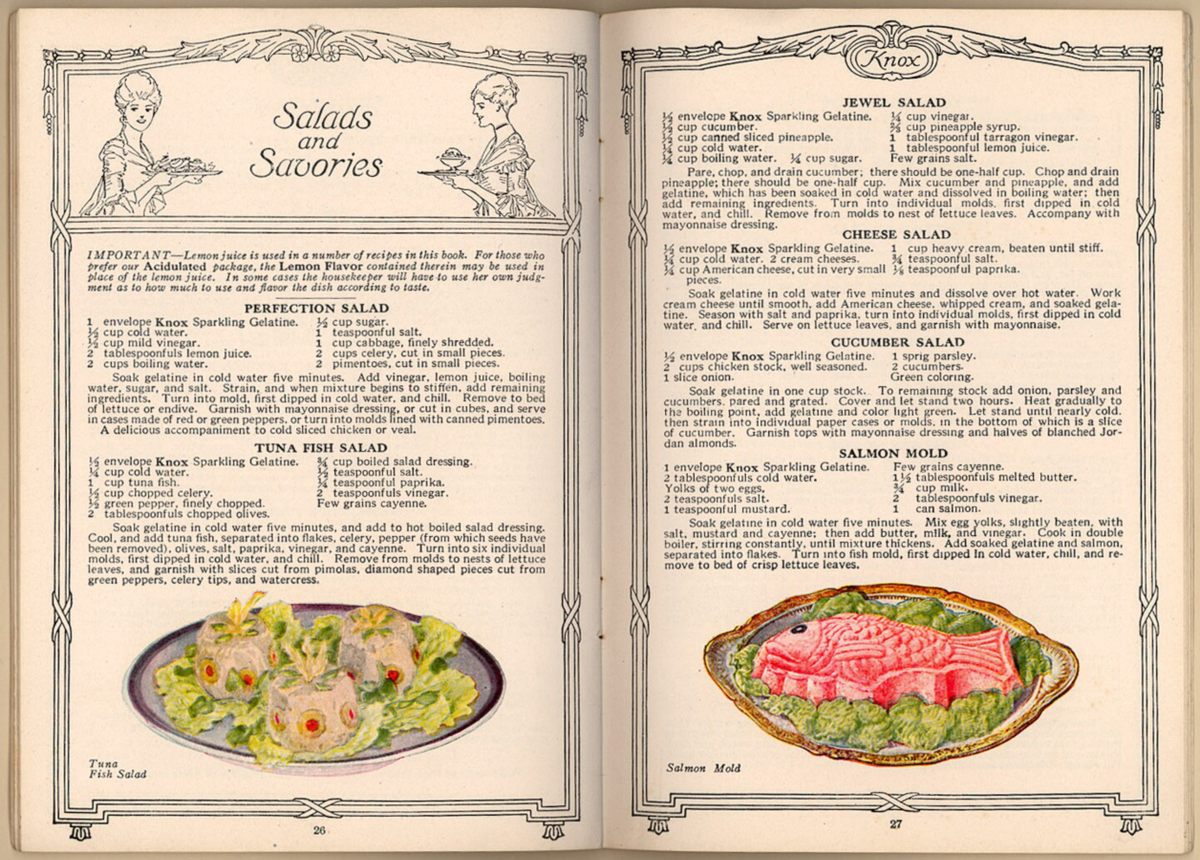
Both Shapiro and Rowbottom suggest that the over-the-top nature of some of these Jell-O salads may lie in the creative frustration of the women who invented them. In her book The Secret History of Home Economics: How Trailblazing Women Harnessed the Power of Home and Changed the Way We Live, Danielle Dreilinger points to leaders of the domestic science and home economics movement like Lillian Gilbreth, the University of California at Berkeley’s first woman valedictorian, who designed a hyper-efficient kitchen in the 1920s, and Ellen Richards, a chemist at M.I.T. in the 1870s who managed to obtain funding for a women’s laboratory, but only as long as its focus was on nutrition and sanitation.
“You don’t want [women students] taking chemistry and biology, so you shunt them off to home economics,” Shapiro says. “They were trained in science and chemistry and they channeled that into, ‘How do I take this and turn it into dessert?’ So they wound up developing recipes for Betty Crocker.”
The result of giving brilliant women no outlet beyond the domestic sphere was corporate test kitchens full of minds that, in later decades, might have ended up in laboratories, channeling their knowledge of chemistry into Jell-O molds and boxed cake mixes. Making “women’s work” like cooking more scientific was on some level an attempt to escape from its confines. Unlike messy, freeform cookery, gelatin salads required precise measurements. It resulted in food that appeared orderly and contained, that didn’t require the diner dirtying their fingers.
The women of the Knox Company and General Foods test kitchens sold this message by making these meals visually stunning. By the 1910s and ’20s, glossy, full-color magazines were in homes all over the country, telling women explicitly and implicitly what sort of life they should strive for. A gelatin mold on the cover of Gourmet was guaranteed to turn heads, no matter what it tasted like.
“Some of these gelatin preparations were definitely seen as aspirational and high-class, something you would achieve to look sophisticated and chic,” Shapiro says. In the early 1900s, recipes like Fannie Farmer’s Ginger Ale Salad would appear in Woman’s Home Companion, a magazine catering to the upper-middle class. “If you’ve just come back from eight hours of working at the factory, you don’t have time for this kind of thing. So it gains a class identity from the tables it sits upon and the people who are serving it.”
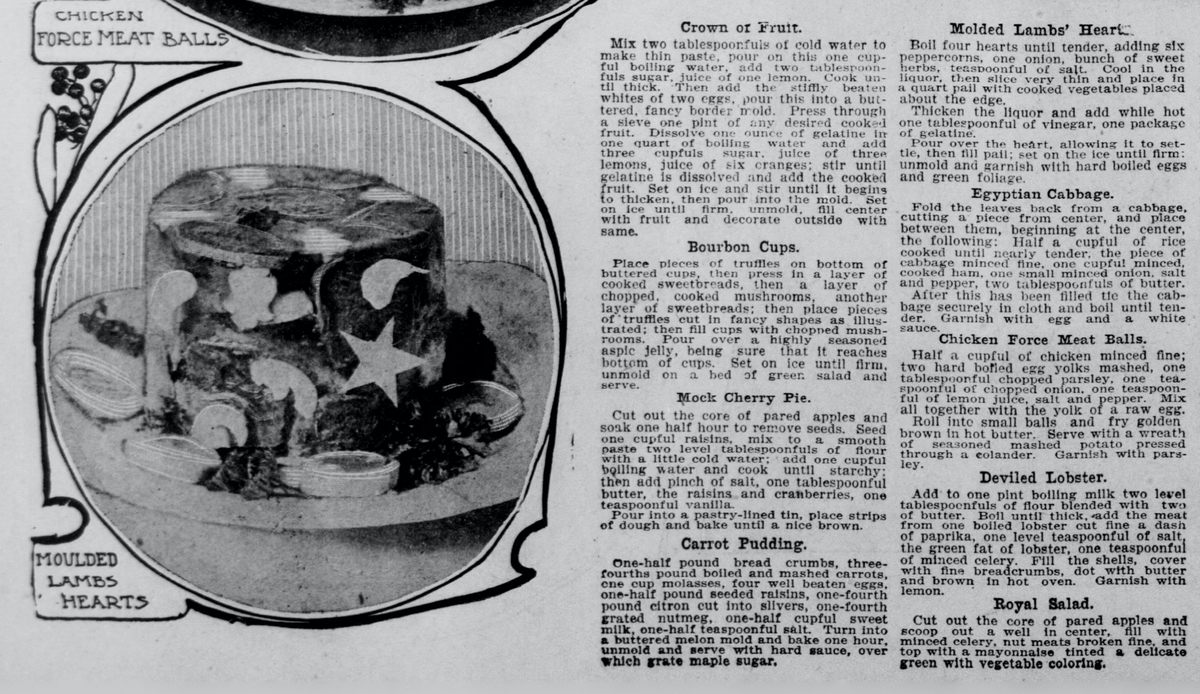
With the hardships of the Great Depression and World War II rationing, American Jell-O salads became a way to stretch leftover scraps into something greater than the sum of their parts. The company shaped its message to fit the times: When Americans needed to economize, Jell-O was marketed as affordable; when they had no time to get dinner on the table, it was marketed as convenient and “so easy a child could do it;” when they wanted low-fat, low-sugar everything, the company leaned into the idea of Jell-O as a guiltless dessert.
The more the brand sold the idea of Jell-O’s accessibility, the less it came to be viewed as high-class. By the 1990s, Jell-O had become a convenience product, a wan, Weight Watchers–approved substitute for real cake, and the food spoonfed to hospital patients. Jell-O’s sales fell $371 million between 2009 and 2018. Much like in the 1960s and ’70s, however, when Jell-O meat salads were already falling out of fashion in many parts of the country, they hung on in regional pockets of the Midwest and American South. Utah, in particular, has long held on to its unofficial title as the nation’s “Jell-O Belt,” for its enduring popularity there.
“That is the history of Jell-O: It is constantly shapeshifting and remaking itself,” Rowbottom says. “It’s inherently American.”
Ken Albala is willing to bet that the pendulum of history is poised to swing back in American gelatin’s favor—and he’s not alone. “There are these patterns of popularity and I think [gelatin’s return] is inevitable,” he says. “I think it will be a new iteration and I’m hoping to be part of it.”
What exactly that iteration will be remains to be seen, although it’s currently mutating in two directions: the avant-garde nightmare dishes of the internet and the high-end creations of chefs. Much like the early 20th century, gelatin is a perfect fit for the visual media that dominate American popular culture. What’s more, “Our distrust of science and technology is waning,” Albala says. “We’re beginning to trust in the food industry again.”
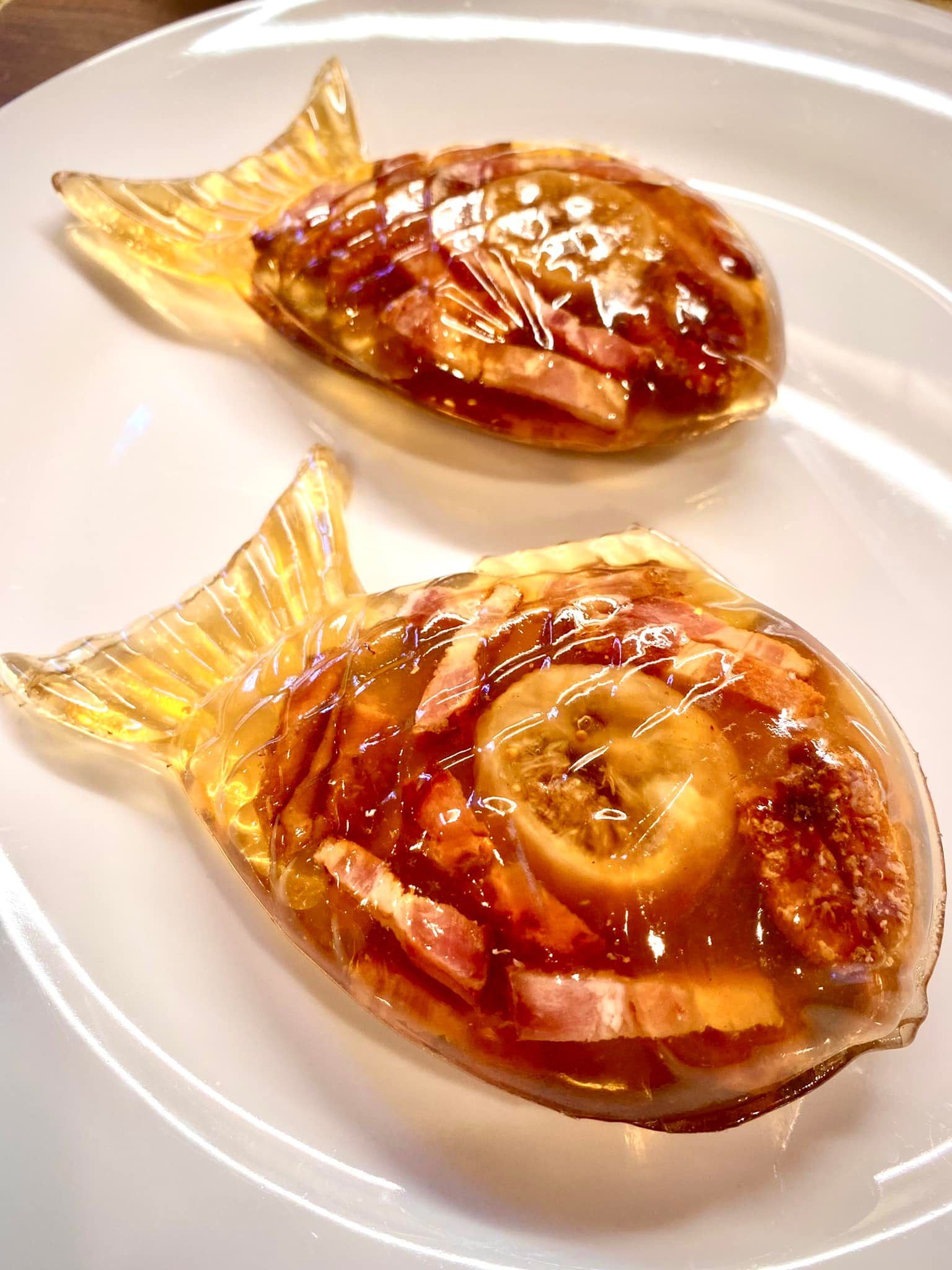
The American gastronomic zeitgeist appears to be veering away from a decades-long paranoia about anything edible to come out of a laboratory. Restaurants are proudly announcing the presence of monosodium glutamate—a synthetic version of a naturally occurring compound—in dishes and cocktails; tech-based meat alternatives are booming; and American gelatin is back, baby—sort of.
Members of “Show Me Your Aspics,” who Albala says are mostly women and nonbinary folks in their thirties, may lean into the weirdness of aspics, but a number of chefs are taking them more seriously. Part of that comes from a canny appreciation for how well luminous, wiggly food resonates across social media platforms. In Brooklyn, boozy jelly cakes—essentially grown-up Jell-O shots—are selling briskly at $80 a pop. (Gastro Obscura even jelly-caked its book cover.)
Other chefs in the United States are seeking aspic inspiration from cultures that didn’t go quite so haywire with their jellies. Southeast and East Asian jellied sweets set with agar-agar are rising in popularity in the U.S., as are the occasional savory aspics. At Maison Nico, a Michelin-starred restaurant in San Francisco, chef Nico Delaroque is making aspics set in fish-based stock in the French tradition.
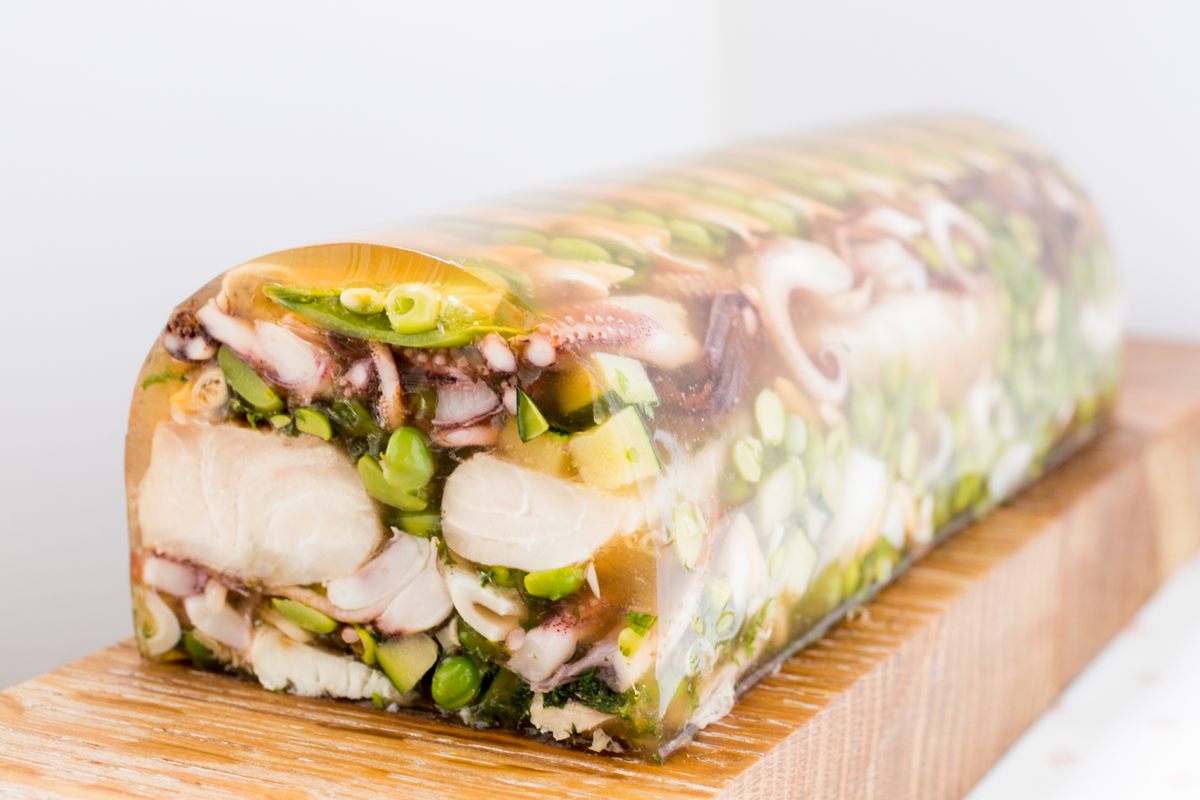
“I didn’t know [aspics] had some bad reputation here or were seen as outdated,” Delaroque says. His creations are decidedly unobtainable to any but the most ambitious of home cooks. Dishes like his aspic de homard en bouillabaisse, with a clarified rockfish and lobster shell stock fragrant with herbs and fennel and topped with a whole lobster tail, are more in line of what chef Marie-Antoine Carême might have presented to a French monarch.
“The visual component is pretty important here, because at the end of the day, people are not sure about a savory gelatin meal unless it looks great,” Delaroque says. “They’re on display in a refrigerator case under LED lighting, so it’s almost like a spotlight. The aspics have a lot of intrigue, so they kind of stand alone.”
But restaurant food is not the same as home-cooked food. The fact that the aspics attracting attention on Facebook, Pinterest, and TikTok are incredibly demanding in terms of time and labor means they’re once again unobtainable to the average amateur cook, which may be part of their allure. The domestic scientists wanted to bury the past in order to push society towards the future, these modern-day aspics-makers want you to know that their creations, both the deranged and delicious, are decidedly not your grandma’s Jell-O.
Gastro Obscura covers the world’s most wondrous food and drink.
Sign up for our email, delivered twice a week.


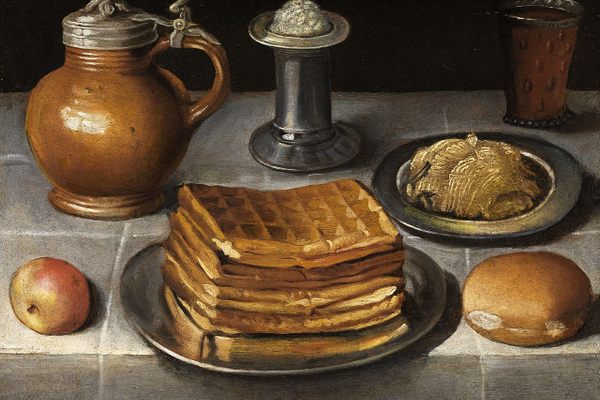










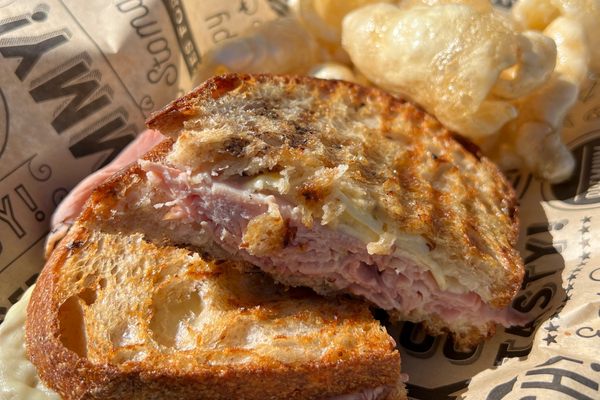

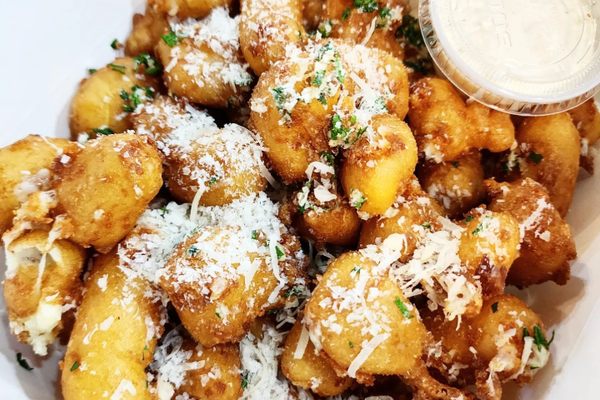






Follow us on Twitter to get the latest on the world's hidden wonders.
Like us on Facebook to get the latest on the world's hidden wonders.
Follow us on Twitter Like us on Facebook